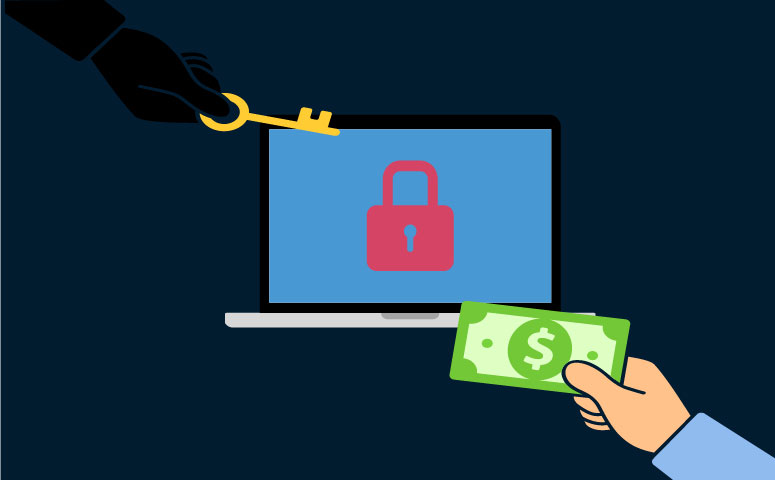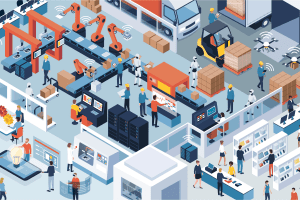Ransomware surges in, and the data floods out

Paul Prudhomme, Head of Threat Intelligence Advisory, IntSights, raises awareness around the evolution of ransomware and current threats to business data. He discusses how criminals are deploying ransomware and what business leaders need to know when it comes to protecting themselves against data leakage.
Organisations today face an endless number of cyber threats, but ransomware remains one of the most feared. Ransomware has evolved from being a single-track extortion trick to a complex, multi-layer campaign. There are now far more risks to an organisation than simply losing a lump sum of money. Today, if ransomware takes hold, businesses could face brand damage, non-compliance penalties, lawsuit exposure and loss of sensitive data or intellectual property.
Unfortunately, many businesses are struggling to stay on top of ransomware defences and are left vulnerable to the militia of threats waiting to strike. Looking at the history of this particular cyber threat, we can better understand its direction and how it is likely to evolve further. Armed with this knowledge, organisations have a much better chance of defending against the relentless ransomware attempts launched by adversaries.
An increase in activity
Ransomware has left countless businesses bereft after they have fallen victim to ruthless hackers. The threats to organisations have increased as Ransomware-as-a-Service (RaaS) has gained popularity on the dark web, providing all criminals, no matter their skillset or expertise, with the opportunities to initiate their own ransomware attacks. Those with developed skillsets have moved beyond basic forms of ransomware attacks and now carry out campaigns with multiple forms of extortion. In fact, more than 30 ransomware groups operate according to a double extortion model, where attacks involve encrypted systems as well as a threat about stolen data.

In the past three years, we’ve also seen ransomware payments themselves increase dramatically. In 2018, the average ransom was less than $10,000; in Q3 2020, they had reached an overwhelming average demand of almost $250,000. Of course, different companies have different views on whether ransoms should be paid, but only when forced into that unthinkable position can individuals truly comprehend what is at stake.
The latest evolution
The group responsible for the latest directional shift goes by the name BABUK. This group recently published several press statements announcing that they will no longer encrypt networks as part of their attacks on businesses. There are a few implications from this change in focus:
- Backups become obsolete.
- Businesses will no longer be aware of their network is infected, even if it is up and running.
- The previously respected ethical barriers have been torn down.
It is still important for businesses to maintain backups and ensure they stay detached from the network, but they will not protect companies from ransomware-related damage. ThisIn addition, this approach does not involve encrypting networks, so hackers could still breach the system and leave data-stealing malware without the business being aware. Finally, there was always an unwritten rule that critical infrastructure and healthcare organisations were exempt from ransomware targets – given their responsibility for human life. Now, however, these ethics no longer apply, with medical and educational institutions becoming some of the most targeted industries across the past year.
What the future of ransomware looks like
When considering the future of ransomware, we’re looking at three primary developments. The first being the transition of ransomware for mobile devices. Pretty much every working individual comes with at least one mobile device, making it a prime target for hackers. These small tools are packed full of data in the form of messages, pictures, saved passwords and contact details. As a result, we’re likely to see a surge in ransomware attempts on these devices, either through encryption or potentially just straight to extortion.
The Internet of Things (IoT) is one of the biggest growing markets in the technology industry today, and so, by default, it becomes another big target for hackers. Losing control of internet-connected devices poses greater threats beyond data theft; it could become physically dangerous. Many devices are now connected to the internet, including medical equipment, domestic appliances, and construction tools. Without the necessary forms of protection, these seemingly harmless devices could easily become threatening.
And finally, there is no cap on how high ransom demands could reach. As long as there are victims who are prepared to pay, hackers will continue to push the financial limits. Authorities have been advising individuals and companies not to pay ransoms as there is no guarantee that criminals will not look to exploit you again further down the line. Once you’ve shown that you’re prepared to pay, they’ll keep you in their sights.
Forms of protection
Whilst it’s impossible to predict and defend against every attack on a company’s data, there is plenty that businesses can do to make it as hard as possible for criminals to hack their way in. Firstly, given that phishing campaigns are a commonly used method of planting ransomware, it is vital that companies hold awareness training programmes for employees in order to stop these intruders at the door. This, when combined with advanced firewalls and email protection solutions, helps strengthen the first line of defence.
It’s also important to patch known vulnerabilities and keep software updated. This may seem obvious, but there are still many businesses lacking in basic cyber hygiene. Additionally, deploying a strict closed ports policy, or tight credentials change policy, is a further way companies can prevent data leakage through ransomware. It only takes one weak entrance to the network to grant hackers free reign.
READ MORE:
- Proofpoint: why email is the top cybersecurity threat in 2021
- Supporting your remote workforce: cloud migration for your business in five steps
- SolarWinds IT Trends Report 2021: Building a Secure Future
- Snow Software on cybersecurity trends and challenges in 2021
Unfortunately, regardless of what solutions are developed in the years to come, the threat of ransomware is not going to go away. Through RaaS, this form of attack has become accessible to every level of hacker without the need for specialised skillsets. As we’ve seen, the ransomware landscape can take a complete 180-degree turn in a matter of years, so it is vital that organisations across the board stay vigilant and maintain their awareness of the threats on their company data.
For more news from Top Business Tech, don’t forget to subscribe to our daily bulletin!
